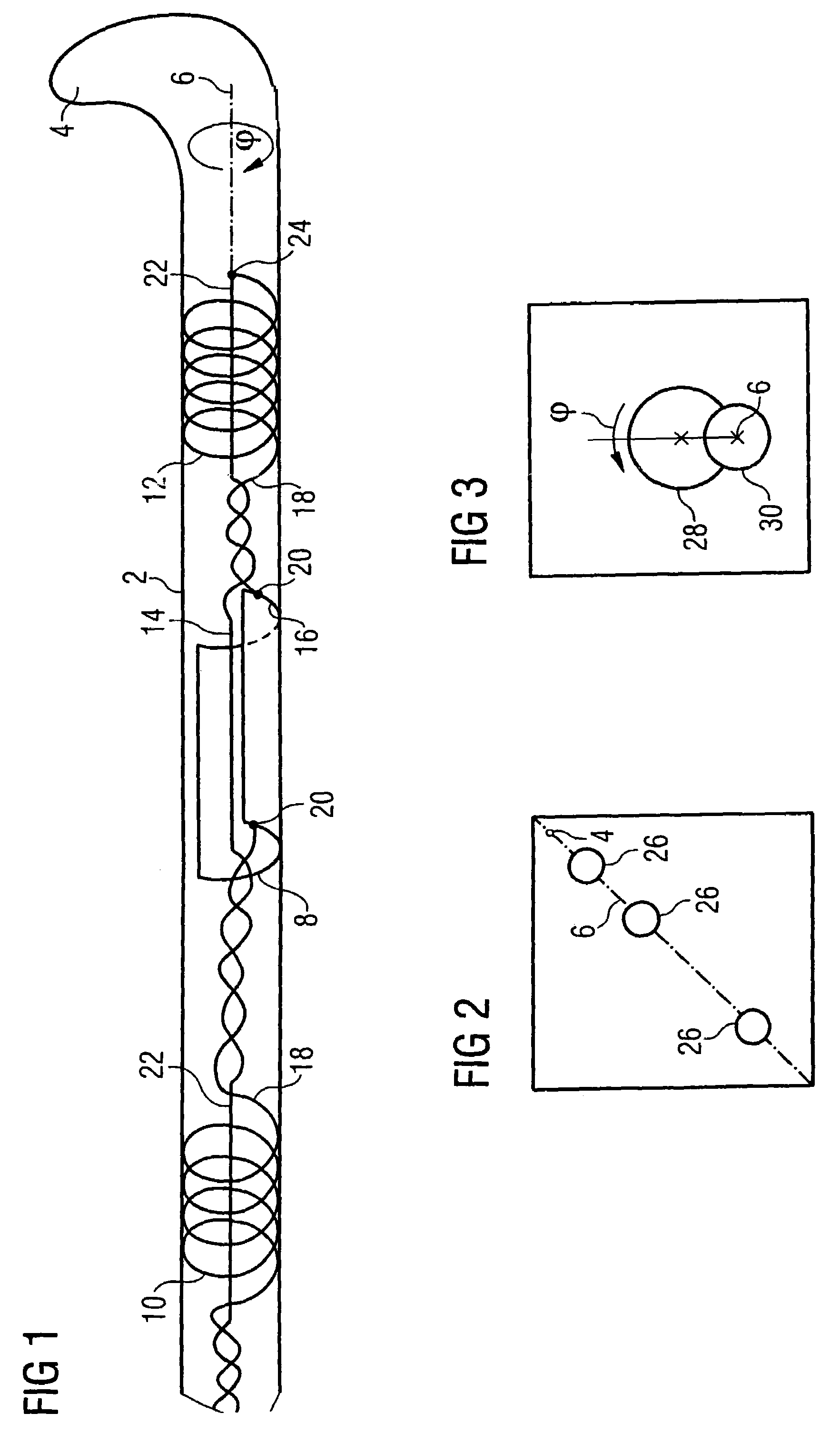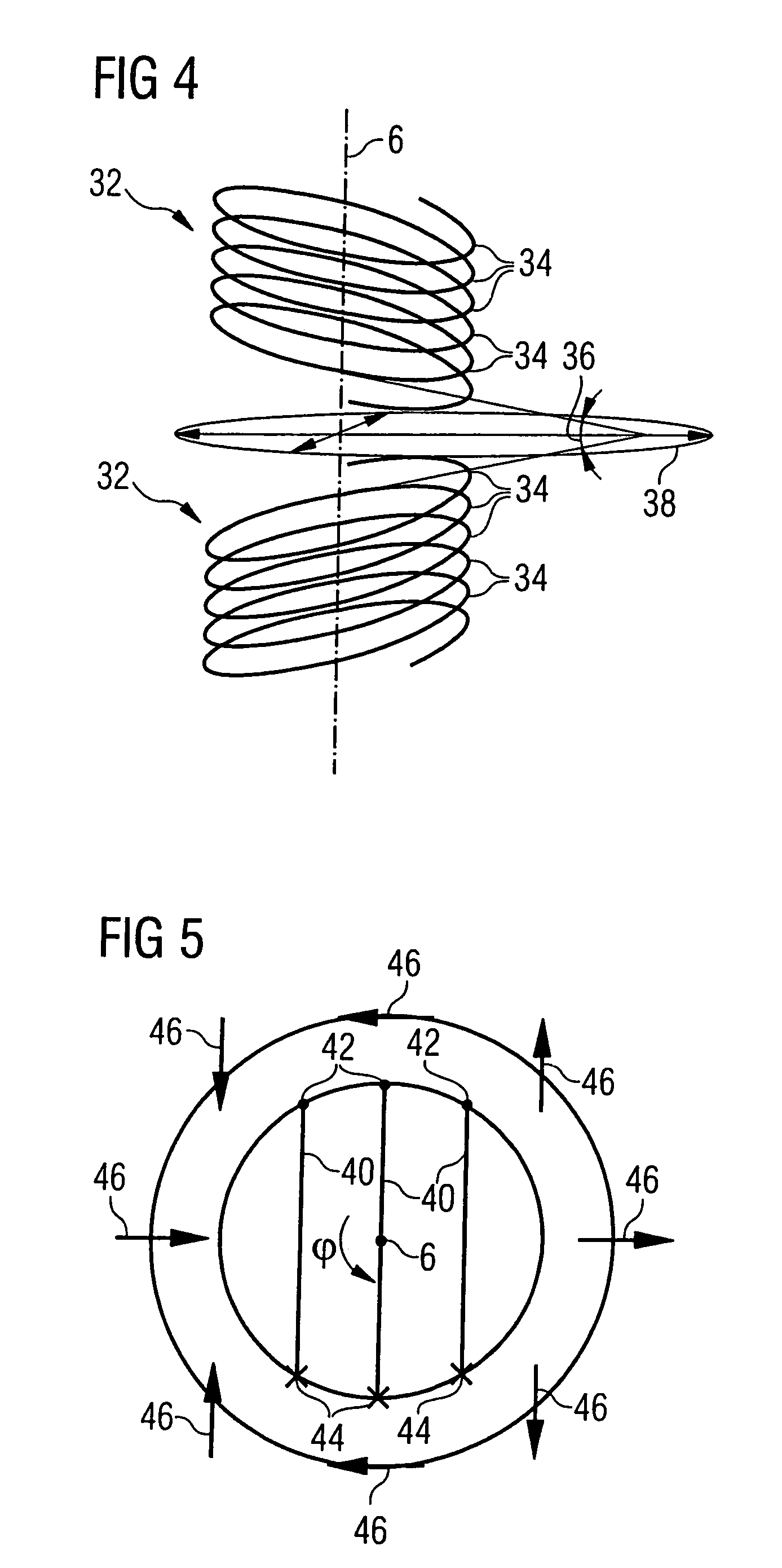Method and apparatus for determining the azimuthal orientation of a medical instrument from MR signals
a technology of magnetic resonance imaging and azimuthal orientation, which is applied in the direction of instruments, applications, diagnostic recording/measuring, etc., can solve the problems of not being able to assess or determine the azimuthal orientation of the catheter tip in real time with this known method, and not being able to discern the orientation of the catheter tip orientation, etc., to achieve the effect of detecting the azimuthal orientation only with difficulty
- Summary
- Abstract
- Description
- Claims
- Application Information
AI Technical Summary
Benefits of technology
Problems solved by technology
Method used
Image
Examples
Embodiment Construction
[0022]FIG. 1 shows a section of a catheter 2 with a curved tip 4. The azimuthal orientation of a tip 4 is designated by the angle φ, which is defined relative to the catheter axis 6. The catheter 2 has an acquisition unit, which in this embodiment is a half-open coaxial cable 8, and a reference unit formed by two coils 10 and 12. The axes of symmetry of the coils 10 and 12 and of the coaxial cable 8 coincide with the catheter axis 6. The catheter 2 is resistant to buckling over its entire length, i.e. the coaxial cable 8, both coils 10 and 12 and the tip 4 are in a fixed alignment relative to one another in the azimuthal direction. The coaxial cable 8 is connected in series with the coils 10 and 12, with the coaxial cable 8 between the coils 10 and 12. The distance of the coaxial cable 8 from the coil 10 is thereby larger than the distance to the coil 12. An asymmetry is thereby created in the arrangement from which the orientation of the catheter axis 6 can be determined, as explai...
PUM
 Login to View More
Login to View More Abstract
Description
Claims
Application Information
 Login to View More
Login to View More - R&D
- Intellectual Property
- Life Sciences
- Materials
- Tech Scout
- Unparalleled Data Quality
- Higher Quality Content
- 60% Fewer Hallucinations
Browse by: Latest US Patents, China's latest patents, Technical Efficacy Thesaurus, Application Domain, Technology Topic, Popular Technical Reports.
© 2025 PatSnap. All rights reserved.Legal|Privacy policy|Modern Slavery Act Transparency Statement|Sitemap|About US| Contact US: help@patsnap.com



